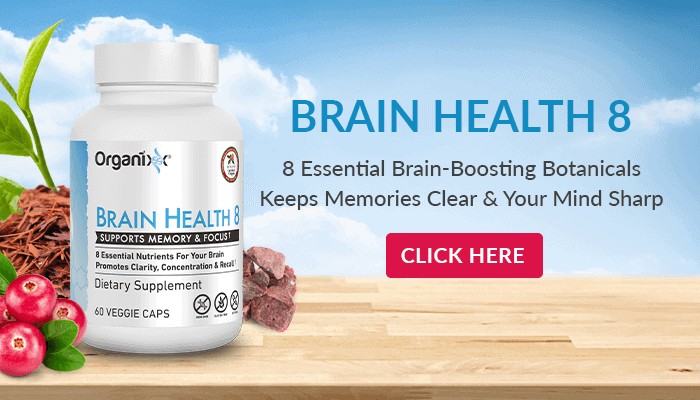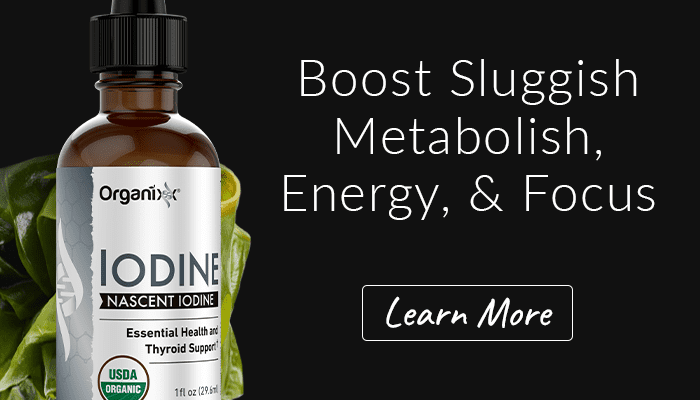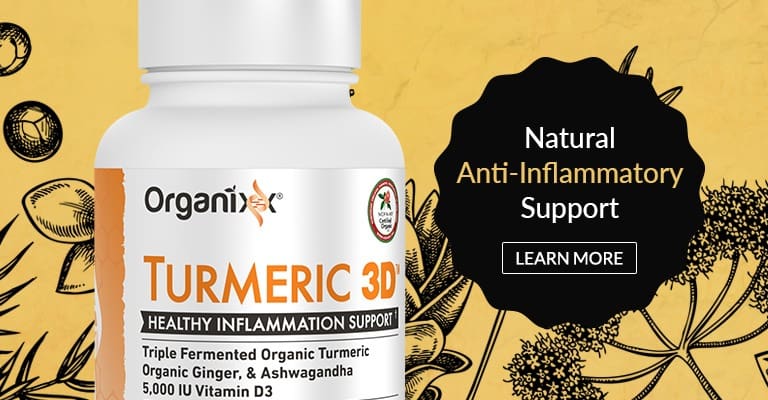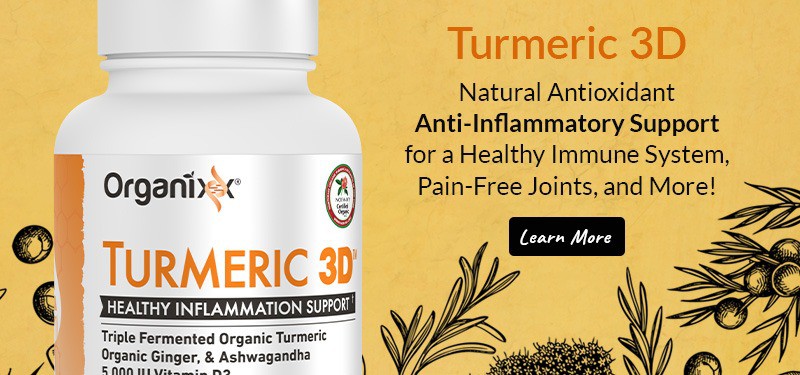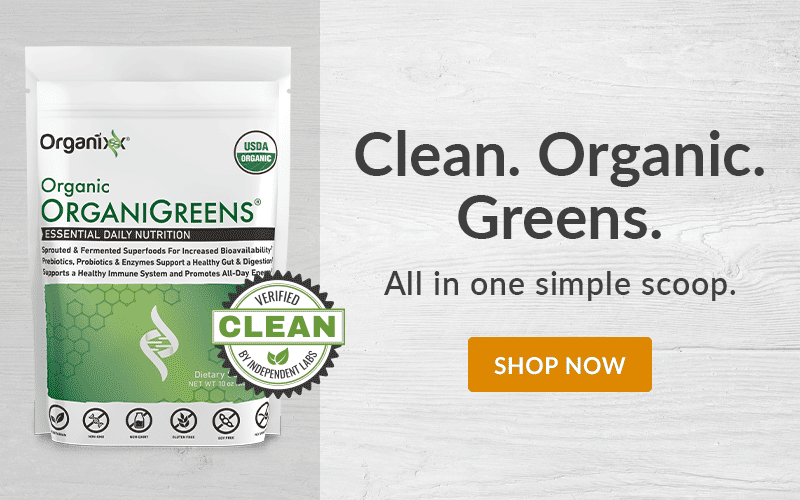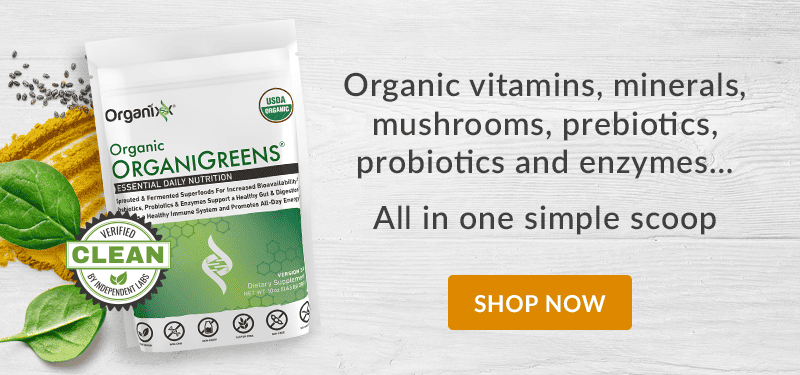Guayusa (Ilex guayusa) is a type of holly plant that grows in northern parts of South America. For traditional peoples of the Amazon Rainforest (especially in parts of Ecuador), Guayusa has been a mainstay herb for centuries. While it has been virtually unknown in the West, more people are now “waking up” (literally!) to the benefits of guayusa for health and vitality [1].
Guayusa Benefits: What Makes It So Special?

Of all the amazing herbs out there for health and healing, many of them come from the rainforest. Current estimates are that well over 5,000 different species of plants and herbs being used for medicinal purposes come from the Amazon rainforest alone. Not to mention that many more are being discovered every day!
So, why focus on guayusa? Guayusa is unique in that it was virtually unknown to most Americans only a few short years ago. Now it is being hailed as a tonic for both body and brain.
Indeed, guayusa contains some unique properties and chemical combinations that make it spotlight worthy. In addition to a lower caffeine count than coffee (about 99 mg per 8 oz cup [2] to coffee’s 163 mg [3]), guayusa also contains L-theanine.
The Healing Benefits of L-Theanine
L-Theanine is a neuroprotective amino acid that is found in many herbs and teas, including guayusa. In research studies such as that done at the Unilever Food and Health Research Institute in the Netherlands in 2008 [4], L-Theanine was able to change brainwave patterns, even in relatively modest quantities. It moved them from beta waves to alpha waves.

Beta brain waves are synonymous with stress (high beta with chronic stress and hyper-alertness [5]). This is the state of “mind” where ill-health can take hold.
L-Theanine, on the other hand, has the ability to lower brainwaves to alpha, which is the frequency where focus, attention, creativity, and healing blossom.
L-Theanine is thought to promote a state of calm and focus but does not normally promote drowsiness in most people. The L-Theanine content in guayusa, in combination with moderate amounts of theobromine and caffeine, is why many people describe feeling “calm yet focused” after drinking guayusa tea or consuming it in another way.
Several studies have linked L-Theanine with reduced bouts of anxiety, including for those with diagnosed anxiety-centered mental conditions [6]. In addition, research has also discovered that L-Theanine paired with caffeine may increase attention and focus.

A 2010 report published in the journal Nutritional Neuroscience monitored young people who consumed L-Theanine and caffeine. The report authors stated that “(t)he combination of moderate levels of L-theanine and caffeine significantly improved accuracy during task switching and self-reported alertness…and reduced self-reported tiredness [7].”
L-Theanine found in guayusa may be helpful in reducing blood pressure as well. Other investigations have found that L-Theanine can help digestion, inflammation, sinusitis, and as a general immune booster [8].
Guayusa Provides Important Amino Acids & Antioxidants
Another reason why guayusa should be placed on the herbal shelf of anyone looking to improve health and increase focused energy is because of its amino acid and antioxidant content.
Key amino acids besides L-Theanine in guayusa include arginine, cysteine, glutamine, glycine, histidine, leucine, isoleucine, lysine, methionine, threonine, and valine [9].
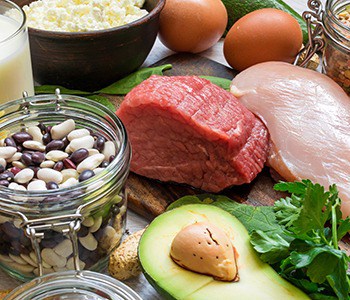
Amino acids are the building blocks of protein, and protein is vital for the body. If you take away the water, our bodies would be 75% protein! Sadly, many people today are deficient in key essential amino acids such as those mentioned above which form the building blocks of life.
High antioxidant levels in guayusa are equally as impressive. They come in the form of phytonutrients such as polyphenols, flavonoids and saponins, which all help to reduce inflammation, detoxify the body, and stimulate the immune system.
Of particular note is theobromine and caffeine, which are phytonutrient alkaloids [10] found in plants. Some experts state that guayusa has the second-highest antioxidant content [11] out there after cacao.
Can Substances in Guayusa Offer Help for Diabetes and Obesity?
Scientists have recently zeroed in on specific substances found in guayusa that may be beneficial for those with diabetes, obesity, and high blood pressure.
Guayusa contains a little-known but powerful health-promoting substance called chlorogenic acid. In a January 2018 study [12], chlorogenic acid was discovered to “modulate lipid metabolism and glucose in both genetically and healthy metabolic related disorders.” This suggests it may be helpful for weight loss as well.

Another substance found in guayusa may make it a useful herb for blood pressure regulation. It is called ursolic acid. A January 2019 report [13] published in the journal Food Research International studied the properties of both guayusa and its close cousin, yerba mate. They discovered that ursolic acid (found in both plants) helps to activate a protein called TGR5.
TGR5 is a “transcription factor” for diabetes, in that it controls how much genetic information goes from DNA to messenger molecules which control diabetes mechanisms. The report authors note that this is an exciting discovery because TGR5 is a key player in regulating insulin sensitivity and overall energy metabolism and expenditure.
Guayusa is a True “Superfood”
What makes a food a “superfood?” Antioxidant load that is off the charts, benefits to both the body and brain, and a long history of use by traditional peoples in the areas where these foods originate are some key components for what makes certain foods truly “super.” Using this definition, guayusa definitely fits the bill as a superfood.
According to TV personality and herbal researcher Chris Kilham [14], also known as the “Medicine Hunter,” guayusa tea has been a mainstay of everyday life for the native Jivaro people of the Amazon rainforest for centuries.
As Kilham describes it, “Historically the Jivaro would rise early, make a fire, boil a pot of guayusa leaves, drink the tea and tell stories. This practice helped to reinforce kinship and community, giving people an opportunity to come together and share stories [15].”
The Jivaro called guayusa the “Night Watchman” because it would help people stay awake, alert, and on their toes without making them drowsy or too wound-up. Indeed, it’s hard to connect (and tell stories) when you are jittery or when you are about to fall asleep.
Guayusa, taken as a tea or in capsule form, appears to have the perfect combination of substances to help our minds unwind as well as focus, not only in the rainforest but in this topsy-turvy place we call the modern world as well! It is also one of eight Amazon rainforest ingredients in our popular Organixx Brain Health 8 formula, along with other superstar brain ingredients such as bacopa and cinnamon.
Better Focus… Crystal-Clear Thinking… a Razor-Sharp Memory… ALL Are Within Your REACH! Each and every bottle of our Organixx Brain Health 8 formula contains a total of 8 superstar ingredients, straight from the AMAZON rainforest.

The World Health Organization (WHO) estimates that about 2 billion people globally are iodine deficient [1]. Iodine is one of the most important essential minerals since it is needed for just about every cell in the human body [2]. If you’re not eating enough foods with iodine, then you may be among the billions of folks who are deficient in iodine.
Read on to discover foods with natural iodine in them, and pointers as to when it may be time to supplement with iodine for your health.
Why More People Need to Eat Foods With Iodine in Them

If you think that a sprinkle of some iodine-fortified table salt on top of a meal is enough to get the amount of iodine your body needs… think again.
While an “overt deficiency” of a certain nutrient can be immediately life-threatening (think vitamin C deficiency and scurvy), subclinical deficiencies of nutrients can be just as damaging in the long run.
“Subclinical iodine deficiency” is when the body gets enough iodine to prevent severe conditions such as goiter and birth defects, but not enough to prevent chronic disease.
These conditions of iodine deficiency can run the gamut from fibroid tumors and hypothyroidism to “brain fog.” People who have iodine at the subclinical level are also at greater risk for thyroid, breast, and prostate cancer [3, 4].
Unfortunately, the “Recommended Daily Allowance” (now called the Dietary Reference Intake or DRI) for iodine hasn’t changed much since the 1940s. During that decade, the U.S. National Institutes of Medicine put the current RDA into place in response to an epidemic of severe iodine deficiency in the Great Lakes and Appalachia area known as the “Goiter Belt [5].”
Signs of Low Iodine Levels

Many of the signs of low iodine levels are the same as low thyroid function (hypothyroidism) since the thyroid is the organ that requires the most iodine as “food.”
These low thyroid symptoms can include:
- Fatigue
- Mood swings
- Poor cognitive function (or “brain fog”)
- Hair loss
- Digestive disorders
- Heart palpitations
- and many others [6]
The gut, salivary glands, and reproductive systems of both men and women also require iodine to function.
Foods Fortified With Iodine: Not Always a Healthy Source

When iodine was first introduced in table salt (and also in fortified bread) in response to the “Goiter Belt” epidemic, it did indeed save a lot of lives. A Boston Medical Center study found that in the 1920s, between 26% and 70% of children in the Goiter Belt area were diagnosed with “clinically apparent goiter [7].”
By the 1950s, upwards of 70% of all households in the U.S. used iodized salt.
A lot has changed in the food industry since then, however. These days, iodized salt manufacturers cut corners to save costs, often at the detriment of consumer safety [8].
Some commercial salt operations use halide substances like fluoride in their products, which ironically have the effect of blocking iodine absorption in the body [9]. [Note: Halides are a group of elements on the periodic table of elements that includes fluorine, chlorine, bromine, and iodine.]
Commercial table salt may also contain other toxins, such as talc, silica aluminate (a form of aluminum), and the chemical additive ferrocyanide [10].

Bread was one of the foods fortified with iodine in the past, but not anymore. As a matter of fact, many popular bread companies actually use iodine-blocking halide substances such as potassium bromate in their bread.
According to the Center for Science in the Public Interest, researchers first discovered the link between bromate and cancer tumors in rats over 30 years ago [11]!
Avoiding any products that may harbor iodine-blocking halides such as fluoride, chlorine, bromide, and their derivatives can go a long way towards helping the iodine that you do ingest naturally to be absorbed.
List of Foods with High Iodine Content
So what foods should you eat for iodine health? Here are some foods with lots of iodine naturally:
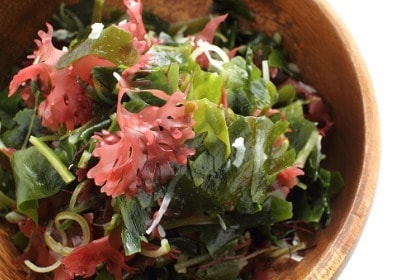
Cleanly grown and harvested sea vegetables are considered the best sources of iodine.
A 2002 French investigation discovered that the Laminaria hyperborean (also known as brown algae) and Gracilaria verrucose (aka red algae) varieties both had not only high iodine concentrations but also lent themselves to high absorption rates when consumed.
In the study, they were also the type of sea vegetables that were the least affected by heavy metals [12]. Some experts state that brown algae varieties, in particular, can contain up to 30,000 times the concentrations of iodine found in seawater [13]!
Some examples of other sea vegetables that are high in iodine include:
- Wakame
- Hiziki
- Kombu
- Sea cucumber
- Dulse
Commercial sea vegetable products are among the foods with iodine to avoid. Be sure that your sea kelp is sourced from a very reliable source. Your company should test for pollutants and harvest using clean practices. This is because heavy metal toxicity in sea vegetables is a concern worldwide.
Other plant foods that contain high amounts of iodine include:
- Prunes
- Spirulina
- Corn
- Potatoes
- Lima Beans
- Peas
- Cranberries
- Navy beans
Organic, hormone-free, and free-range dairy and fish are also solid sources of iodine. These include:
- Wild-caught cod
- Wild-caught salmon
- Yogurt
- Tuna
- Raw milk
- Raw cheese
- Eggs
The Good (and the Bad) of Getting Iodine from Food
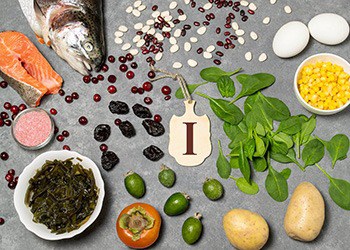
Getting iodine from whole foods is by far the most ideal way to obtain it. Whole foods like sea vegetables, lima beans, and eggs also contain the other nutrients needed to convert iodine into a form that the body can use.
There are many essential minerals and vitamins which are helpful for this conversion process. Among the “powerhouse helpers” when it comes to iodine are potassium, selenium, iron, and zinc.
Foods that contain both iodine and zinc are especially important for thyroid health. While iodine is “food” for the thyroid, zinc is needed for the conversion of thyroid hormones once they are produced. It is also needed for communication between the hypothalamus and the thyroid [14].
Examples of foods that contain both iodine and zinc include:
- Eggs
- Rhubarb
- Seaweed
- Beef
Some foods that are high in zinc alone include:
- Spinach
- Mushrooms
- Dark chocolate
- Many kinds of seeds such as squash, pumpkin, and watermelon
- Some fruit including avocados, blackberries, pomegranates, and raspberries [15]
Why Your Body Needs Selenium to Absorb Iodine
Another element needed for safe iodide and iodine conversion is selenium [16]. Iodine in foods comes mostly in the form of iodide. During this conversion process, hydrogen peroxide (H2O2) is created in the body. H2O2 is necessary too, in the right amounts. Too much, however, can lead to oxidative stress. Selenium has the ability to neutralize excess H2O2.
A 2002 study found that upping selenium levels to 100 mcg/day over nine months increased glutathione levels (the “master antioxidant”) and reduced the number of antibodies associated with autoimmune thyroid disease [17].
When Iodine From Food Is Not Enough

For most individuals, challenges regarding iodine have to do with getting too little, not too much. Low iodine is directly related to low thyroid function, or hypothyroidism, a condition that affects one in 20 American adults [18].
A prudent starting point for anyone who is concerned about their iodine levels is to get an iodine test done. Often labs can check for iodine-blocking halides as well.
When a person suffers from subclinical iodine deficiency, obtaining iodine directly from food may not be enough. The poor soil conditions that led to nutrient deficiency in the United States during the 1940s did not end with the “Goiter Belt.”
A study conducted by the University of Texas took a look at the nutrient load of dozens of the most common American crops over a 50-year period (1950 to 2000). They found that in every instance, mineral and vitamin content is declining significantly over time, and poor soil quality is largely to blame [19].
Finding the Right Iodine Supplement

Potassium iodine from kelp is probably the most common source of iodine found in supplement form. The best way to get the iodine you need, however, is through using a nascent iodine supplement.
Nascent iodine goes into your body cleanly, does not need to be converted, and begins to affect healing mechanisms right away. Organixx Nascent Iodine is USDA Certified Organic and does not come from kelp, so there is no risk of chemical residue.
Don’t be a statistic! Stay away from processed foods, commercial table salt, and halide sources that may be depleting you of iodine. Instead, make the switch to whole foods that contain not only iodine but other vital nutrients as well.
And if you are suffering the effects of hypothyroidism or autoimmune conditions that can lead to thyroid imbalance, consider supplementing with USDA Certified Organic Organixx Nascent Iodine, the safest, most effective type of iodine available.
When your organs are working hard to detoxify, you want the purest form of iodine possible to help them work more efficiently. It only makes sense to use an organic form that’s totally natural and free of chemicals. Organixx Iodine is one of the only formulas that is USDA Certified Organic. It’s a pure, nascent form of iodine which your thyroid can use immediately.
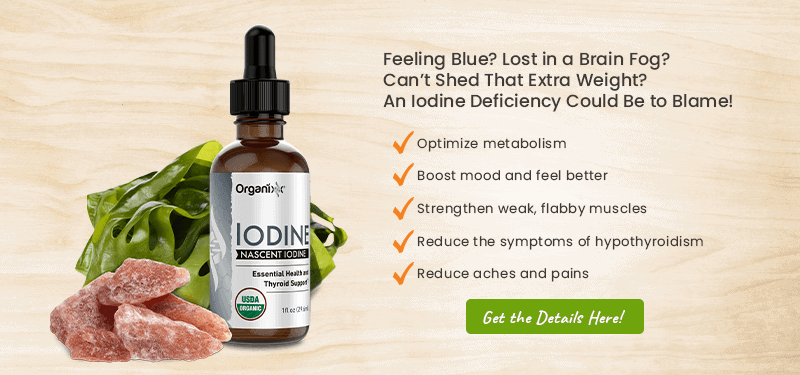
Inflammation is a popular buzzword, but not many people really understand what it means. For instance, did you know that inflammation exists to protect your body from foreign invaders, infections, and illnesses so that damaged and infected cells in your body can heal [1,2]?
In the short term, your body’s inflammatory response is vital for your health. However, it’s only meant to last a short time. When it goes on for too long – known as “chronic” inflammation – it begins to cause serious health problems [3,4].
Unfortunately, our Western medical system mainly tries to treat inflammation by using drugs to suppress the immune system, which only reduces the extent of inflammation instead of eliminating it. Such solutions don’t address the underlying issues that created the initial inflammation, which continues to take place and damage the body.
Steps to Lower Your Risk of Inflammation
You may be wondering if there is anything you can do to lower your risk of inflammation.
Promisingly, modification of diet and lifestyle habits has been shown to be very effective in minimizing inflammation in the body.
Before getting into some specific foods that can have a big impact on reducing inflammation, let’s first take a quick look at how inflammation damages the body…
Free Radicals and the Antioxidants That Neutralize Them
Free radicals, such as reactive oxygen species (ROS) and reactive nitrogen species (RNS), are constantly being produced in the body. These free radicals are responsible for the damage to our body’s cells caused by chronic inflammation [5,6].
When we’re exposed to radiation, cigarette smoke, and other pollutants, free radicals are made in our body at much higher levels than normal. This leads to a condition known as oxidative stress, which damages vital cellular structures in the body and contributes to many health problems [7,8].
What Are Antioxidants?
Antioxidants are naturally occurring compounds that protect against the damage caused by free radicals by preventing them from being formed, making them inactive, or causing their breakdown once they are made.
Fortunately for us, our body contains “innate” enzymatic antioxidant systems which break down and remove free radicals from our body [9]. However, given that we are routinely exposed to more free radicals than our body’s innate systems can handle, we need to consume antioxidants either in our diet or as supplements.
There are literally thousands of such antioxidant molecules that exist in the plant world. Antioxidants include [10]:
- vitamin A
- vitamin C
- vitamin E
- colorful plant pigments known as bioflavonoids
- green tea polyphenols
- carotenes
- anthocyanins
- allicin in garlic
- piperine in black pepper
- curcumin in turmeric
Consuming fresh, locally grown, non-irradiated, non-GMO foods that are naturally antioxidant-rich is a simple yet effective way to manage your risk of developing inflammation.
Scientific evidence shows that consuming such foods can benefit your health, reduce your risk of various age-related health conditions, and potentially even extend your lifespan.
Let’s take a closer look at five antioxidant-laden foods that are proven to be powerfully effective in countering the actions of harmful free radicals and fighting chronic inflammation.
5 Foods That Fight Inflammation
#1: Turmeric
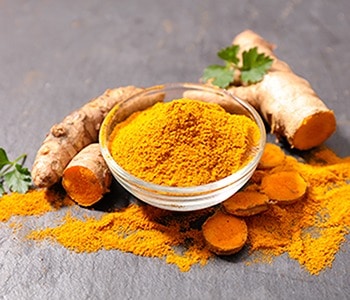 Turmeric, an integral part of the ancient medical system of Ayurveda, has been used to manage inflammation and its consequences for nearly 4,000 years [11].
Turmeric, an integral part of the ancient medical system of Ayurveda, has been used to manage inflammation and its consequences for nearly 4,000 years [11].
Modern science tells us that turmeric contains at least 100 chemical components. The main component is a volatile oil known as aromatic turmerone, or ar-turmerone, which is responsible for turmeric’s aroma [12].
Researchers are now investigating if and how ar-turmerone can help lower inflammation in brain cells, reverse memory loss, and limit brain damage by interacting with the immune system [13].
Turmeric also contains the active ingredient curcumin [14]. Thousands of scientific studies and over 100 clinical trials have shown that curcumin has remarkable antioxidant activity and neutralizes free radicals effectively. Curcumin also interacts directly with multiple targets in the body’s cells related to inflammation [15-21].
For instance, curcumin blocks production of a type of free radical known as reactive oxygen species (ROS), which plays an important role in inflammation [22].
In animal studies, curcumin has also been shown to reduce the levels of the inflammatory marker C-reactive protein (CRP) [23].
Research shows that there’s a connection between chronic inflammation and many chronic health conditions including cancer, diabetes, cardiovascular, neurological, inflammatory bowel disease, and pulmonary diseases.
According to a 2015 report published in the journal Molecules, “the antioxidant properties of curcumin can play a key role in the prevention and treatment of chronic inflammation diseases [24].”
In a study dating back to 1980 published in the Indian Journal of Medical Research, individuals suffering from joint-related problems who consumed curcumin supplements reported significant improvements in morning stiffness, walking time, and swelling [25].
Metabolic syndrome is a health condition in which inflammation plays a role and whose symptoms include high blood pressure, excess blood sugar, and poor weight management. If left unchecked, it can lead to potentially deadly health problems. In a double-blind, placebo-controlled study reported in the journal Nutrition in 2016, individuals with metabolic syndrome were given either curcumin or placebo for eight weeks [26].
Individuals who consumed curcumin showed improved blood levels of multiple inflammation markers, including CRP. They also had lower blood sugar levels. In conclusion, the study’s senior author stated that, “The findings of our studies, along with clinical findings reported by other groups, indicate the usefulness of daily use of curcumin supplement for the prevention and treatment of several diseases [27].”
Curcumin also helps to manage the effects of chronic inflammation on the skin. Radiation therapy causes many severe side effects, including radiation dermatitis caused by local inflammation. In a randomized, double-blind, placebo-controlled clinical study, patients were given either two grams of curcumin or control orally three times daily throughout their radiation therapy sessions [28]. Curcumin therapy was shown to significantly reduce the severity of radiation dermatitis.
Similarly, both turmeric and curcumin have been shown to help manage other skin conditions associated with inflammation.
#2: Foods Containing Omega-3 Fatty Acids
Omega-3 fatty acids are also known as essential fatty acids because they are essential for many important biological processes in the body. However, our body cannot make them, so we need to get them from our diet or from supplements. Alpha-linolenic acid (ALA), eicosapentanoic acid (EPA), and docosahexanoic acid (DHA) are the best-known omega-3 fatty acids [29,30].
Good sources of ALA include chia seeds, flax seeds, hemp seeds, walnuts, almonds, and hazelnuts. DHA and EPA are present in cold water fatty fish such as mackerel, sardines, salmon, herring, and trout, and in fish and krill oils.
In fact, DHA and EPA are originally made by microalgae – and when krill and fish consume these algae, they accumulate DHA and EPA in their bodies [31,32]. The only practical way for us to get the levels of EPA and DHA we need to maintain our health is to get them directly from foods and supplements.
Omega-3 fatty acids are important structural components of the so-called “cell membranes” that surround and protect each cell in our body. Omega-3 fatty acids are also used to make signaling molecules known as eicosanoids, which carry out many functions in our heart, blood vessels, lungs, and immune and hormonal systems [33,34]. Eicosanoids are also key mediators and regulators of inflammation.
Arachidonic acid is our body’s main source of pro-inflammatory eicosanoids. EPA and DHA compete with arachidonic acid in making eicosanoids. Higher levels of EPA and DHA have been shown to tip the balance in our body toward lower inflammatory activity [35].
For instance, animal studies show that production of arachidonic acid‐derived eicosanoids can be reduced by EPA or DHA consumption [36]. Similarly, numerous studies with both healthy human volunteers and patients with inflammation-related health conditions show that consuming fish supplements containing EPA and DHA can lower production of arachidonic acid‐derived eicosanoids in their body [37].
EPA and DHA also help to manage inflammation by lowering production of the small immune signaling proteins known as cytokines, reducing the activity of immune T cells, and blocking production of the pro-inflammatory transcription factor NF-kappa B [38].
#3: Medicinal Mushrooms
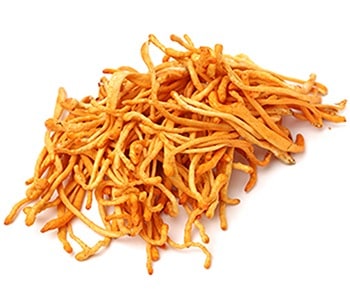 Did you know that more than 100 mushroom species are currently being studied all over the world to uncover their health benefits? Modern scientific research is now confirming what many ancient cultures have long known – that mushrooms contain some of the most potent, yet safest chemical ingredients found in nature [39].
Did you know that more than 100 mushroom species are currently being studied all over the world to uncover their health benefits? Modern scientific research is now confirming what many ancient cultures have long known – that mushrooms contain some of the most potent, yet safest chemical ingredients found in nature [39].
One such medicinal mushroom is Chaga, which has long been part of traditional folk therapy in Russia and other northern European countries. This mushroom contains many potent compounds and is known to have antioxidant properties [40-42].
For instance, a 2016 study showed that a Chaga polysaccharide could neutralize free radicals [43]. Another 2012 study showed that a water-based extract of Chaga could reduce the expression of pro-inflammatory cytokines [44].
Reishi is another well-known medicinal mushroom. Used for over 2,000 years by sages and shamans for traditional medicinal purposes, Reishi is well known for being able to both relax and fortify mind and body [45,46].
Natural chemicals present in Reishi have been shown to have antioxidant and immune-strengthening properties [47, 48]. For instance, a Reishi extract has been shown to neutralize free radical activity and support healthy liver function [49]. Health experts also believe that Reishi can help to counter some of the symptoms of aging, thanks to its anti-inflammatory properties, ability to fight free radicals, and reduce cellular damage associated with oxidative stress [50-52].
Cordyceps, also known as the caterpillar fungus, has long been a part of traditional Chinese and Tibetan medicine [53-55]. The authors of a 2012 study stated that Cordyceps polysaccharides “can also improve the antioxidation activity in immunosuppressed mice, significantly increase the superoxidase dismutase, catalase, and glutathione peroxidase levels and the total antioxidant capacity, and decrease the malondialdehyde levels in vivo [56].”
In fact, superoxidase dismutase, catalase, and glutathione peroxidase are innate enzymatic antioxidant systems in our body, while malondialdehyde is used as a marker for free radical damage. In other words, cordyceps directly helps to neutralize free radicals and also helps boost our body’s natural antioxidant systems.
#4: Green Tea
Tea is the most popular beverage consumed worldwide after water. Popular in Japan and parts of China, green tea accounts for about 20% of total tea production and has been thoroughly studied for its health benefits. Green tea contains caffeine, tea polyphenols, chlorophyll, and other compounds that contribute to its aroma and taste.
Green tea polyphenols include the catechins, of which epigallocatechin-3-gallate (EGCG) and epigallocatechin (ECG) possess antioxidant activity and have been shown to have anti-inflammatory effects in multiple laboratory, animal, and human studies [57-61].
Specifically, green tea and ECG have been shown to suppress the expression of pro-inflammatory cytokines and inflammation-related enzymes, along with blocking the activity of the pro-inflammatory transcription factor NF kappa B.
In other words, green tea extracts and tea polyphenols may prove to be useful in alleviating health conditions in which chronic inflammation plays a role [62,63].
#5: Wild Blueberries
Blueberries, native to North America, are closely related to cranberries, bilberries, and huckleberries. They contain polyphenolic compounds known as anthocyanins, which are water-soluble pigments that can appear red, purple, or blue, depending on their pH.
More than 600 anthocyanins have been identified in nature, where they mainly act as antioxidants to counter the actions of free radicals formed as a result of overexposure to UV light and extreme temperatures [64].
Laboratory studies as well as human clinical trials indicate that both blueberries and the anthocyanins they contain possess significant anti-inflammatory properties [65]. For instance, in a 2013 study published in the European Journal of Nutrition, consumption of a drink made from wild blueberries significantly reduced levels of oxidized DNA and increased resistance to oxidatively induced DNA damage in healthy male volunteers [66].
All the available evidence suggests that the anti-inflammatory actions of blueberries are linked to their antioxidant properties [67].
There you have it, 5 foods that are readily accessible in either whole food form or supplements that aid the body in minimizing the damaging effects of inflammation naturally: turmeric, omega-3s, medicinal mushrooms, green tea, and blueberries.
Replacing the processed, pro-inflammatory foods in your diet with these foods and beverages that are high in antioxidants is a positive step in reducing inflammation itself, as well as the debilitating diseases linked to chronic inflammation.
Turmeric 3D from Organixx provides you one of the most “bioavailable” forms of turmeric due to its unique fermentation process. This means your body experiences the maximum benefits of the purest, most potent turmeric available!
Everyone knows that the human body requires proper nutrition in order to live. And it’s safe to say that most everyone knows that eating healthy is necessary in order to live well. So why then do so many people (perhaps you’re one of them) seem to come up short in achieving the types of life-changing results they want… even when following the eating advice given to them by their doctors and dietitians?
For one, the definition of what it means to “eat healthy” varies widely depending on who you ask. For some people, eating fast food just three times a week instead of five (or more!) means that they’re doing a pretty good job at staying healthy. For others, eating healthy means popping a multivitamin after a sugar-filled breakfast of cereal and muffins and calling it a day.
Avoiding fast food and taking multivitamins aren’t bad things, of course. But with the challenges we face in the modern world, these actions simply aren’t enough to really achieve an optimal level of wellness that leaves the body feeling good and full of energy.
Supercharging your health requires a whole lot more than just eating a salad every now and again or switching to bottled juice instead of soda pop. It requires dialing in on practical ways to mega-boost your diet with superfood nutrition from as many different sources as possible.
It might sound complicated right out of the gate, but learning these hidden tricks of the dietary trade doesn’t have to be overwhelming, and it certainly isn’t unattainable.
When it comes to superfood nutrition, there are six major categories that serve as a great starting point if you’re really serious about fast-tracking your way to real health.
Focusing on including more of these foods into your daily routine is a surefire way to get a head start on forging a solid pathway to what we all hope to achieve − optimal wellness.
Superfood #1: Medicinal Mushrooms
Whether sautéed or stir-fried, mushrooms are a tasty addition to almost any savory dish. But did you know that there are more than 10,000 different varieties of mushrooms just in North America alone?
Among these, many mushrooms fall into the therapeutic category of medicinal fungi, as they offer a diverse array of health benefits… some of which may surprise you.
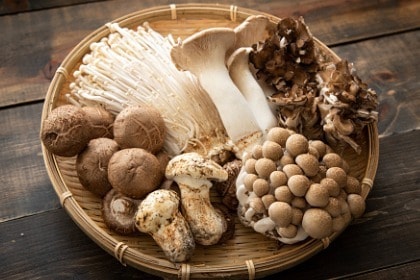 Turkey tail (Trametes versicolor) mushrooms, for instance, possess powerful antioxidant potential, helping to enhance the immune system and lower cholesterol levels.
Turkey tail (Trametes versicolor) mushrooms, for instance, possess powerful antioxidant potential, helping to enhance the immune system and lower cholesterol levels.
Reishi (Ganoderma lucidum) mushrooms are similarly immune-supportive, also helping to ward off viruses while calming the mind. In the event that you encounter a poisonous mushroom, reishi mushrooms can further serve as a potent antidote, while also helping to balance the adrenal glands and promoting feelings of calm.
You may have heard of Shiitake (Lentinula edodes) mushrooms because they’re popular cooking mushrooms, but they also have a number of studied health benefits. Shiitake mushrooms are so “medicinal,” in fact, that herbalist Christopher Hobbs, editorial advisor for Herbs for Health, says they’re effective for nearly every ailment.
Superfood #2: Exotic Superfruits
We’re all familiar with common fruits like apples, oranges, and strawberries. But what about not-so-common varieties like acerola cherry and camu camu?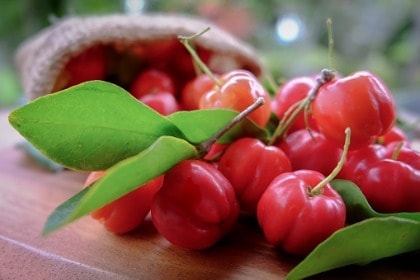
Both of these exotic superfruits contain some of the world’s highest levels of natural vitamin C, it turns out, and both can do wonders for the body in terms of strengthening its defenses and improving its overall functionality.
Studies show that acerola cherry is a powerful antioxidant fruit rich in flavonoids like quercetin that support cardiovascular, immune, and respiratory health. It’s also a potent DNA protector that minimizes oxidative damage and ultimately helps to prevent the types of harmful mutations that lead to cancer growth and proliferation.
Camu camu is a type of Amazon rainforest fruit that’s also rich in antioxidants (especially vitamin C) that helps to combat early aging while simultaneously helping to support healthy inflammation levels in the body. This, combined with beneficial phytonutrients such as ellagic acid, quercetin, and myricetin, makes camu camu exactly the type of superfood you need to achieve your health goals.
Superfood #3: Sprouted Seeds
These tiny packages of nourishment are where life begins, which explains why foods such as chia seeds are an incredibly important part of any healthy diet.
But even for all of their many health benefits, seeds become even healthier when they’re sprouted. Sprouting unlocks a cornucopia of seed nutrition that would otherwise not be accessible by the body. Seed germination not only makes seeds more nutritionally bioavailable, but it also boosts their overall nutrient content − in many cases by dramatic amounts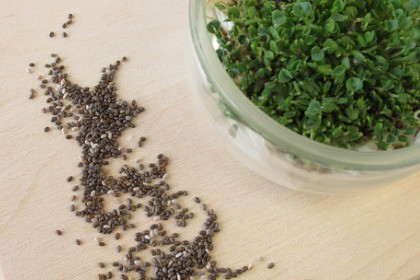
Sprouting is especially important because it deactivates certain “anti-nutrients” in seeds that can inhibit nutrient absorption and even rob your body of its own nutrient stores.
Such anti-nutrients include things like phytic acid, enzyme inhibitors, lectins, saponins, and polyphenols. If you’ve ever felt like your body doesn’t agree with seeds (or nuts or beans), it could be because of these anti-nutrients, which are effectively removed during the sprouting process.
Superfood #4: Fermented Herbs
Herbs are already an underrated dietary element, and fermented herbs especially so. Like sprouting, fermenting helps to break down and convert one type of nutrient into another, making it more digestible and assimilable than it otherwise would be in its unfermented form.
Pretty well all herbs offer significant health benefits, so make sure you’re using plenty of fresh, dried, and/or fermented herbs such as garlic, ginger root, and turmeric in your cooking.
Superfood #5: Probiotics
Without these active little critters in our bellies, we would have a very difficult time digesting our food. Probiotics are what perform the digestive equivalent of both sprouting and fermenting inside the gut. They help to balance the microbial ecosystem that keeps a close eye on foreign invaders and makes sure that everything we eat is digested in such a way that the body can use it for growth and repair.
There are untold numbers of probiotic bacteria and bacterial colonies that live inside our digestive tracts, not to mention the many varieties that live in soil such as Bacillus subtilis.
In a perfect, chemical-free world, these soil-based probiotics would enrich the foods we eat while they grow. However, oftentimes these are missing, which is why probiotic supplementation can be beneficial.
Helping to activate other nutrients and make them more bioavailable, these pro-nutrients actively support nutrient metabolism while helping to balance gut function.
Superfood #6: Enzymes
Last, but certainly not least, are enzymes. These protein catalysts function as the energy force for the entire body. Not only are enzymes essential for the breakdown of food to be used for energy and cellular metabolism, but they also serve as the engineers, technicians, and maintenance crews to keep the many vital systems of the body functioning at full speed and with optimal efficiency.
Enzymes are perhaps the most overlooked dietary element because many people don’t even know what they are. And yet, without them, life itself would not exist. Cooked, processed, and chemical-treated foods − which many people eat on a regular basis − are mostly or completely devoid of enzymes, which makes these foods harder for the body to digest.
The following are among the most important enzymes lost as a result of processing and heating that are worth supplementing with in order to correct this deficiency:
- Cellulase: Necessary to break down plant fiber in greens, sprouts, herbs, and fruits
- Beta-glucanase: Necessary to break down fungi, yeast, and cereal bran fiber
- Amylase: Necessary to break down carbohydrates and starches
- Xylanase: Necessary to break down “tougher” fiber in beans, cereal grains, and certain vegetables
- Protease: Necessary to break down protein
- Glucoamylase: Necessary to break down carbohydrates and starches
- Phytase: Necessary to convert “anti-nutrients” in beans, seeds, legumes, and grains into nutrients and trace minerals
- Pectinase: Necessary to break down pectin fiber in fruits and vegetables
- Lipase: Necessary to break down fats
- Lactase: Necessary for processing milk lactose
- Alpha-galactosidase: Necessary to break down complex carbohydrate foods like cruciferous vegetables
- Hemicellulase: Necessary to break down plant fiber in greens, sprouts, herbs, and fruits
- Invertase: Necessary to break down complex sugars into simple sugars
All plant foods contain digestive enzymes, so be sure to incorporate plenty of servings of organic fruits and vegetables into your daily diet. You might also consider adding a full-spectrum enzyme supplement to your daily regimen to aid digestion and increase the metabolism of carbs, fat, and protein.
The latest formula of Organic OrganiGreens is our best yet. In just one simple scoop, add 17 sprouted and fermented superfoods and botanicals, plus probiotics and enzymes, to your daily diet to fill nutritional gaps and support healthy immune function, increased energy and mental clarity, as well as digestion and detoxification processes. Easily mixes in water, smoothies, juices, and recipes, and it also tastes great – even without any added sugars.


